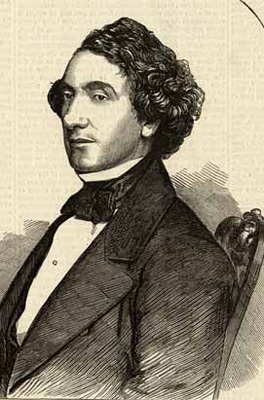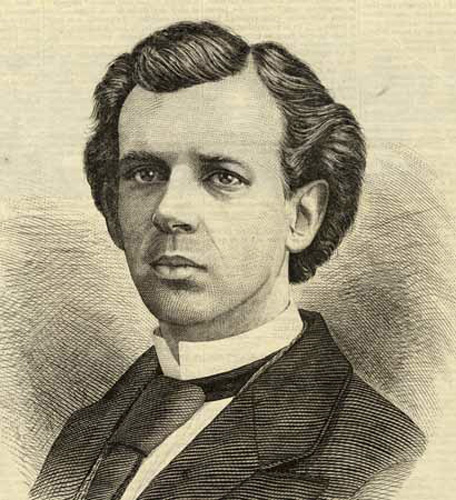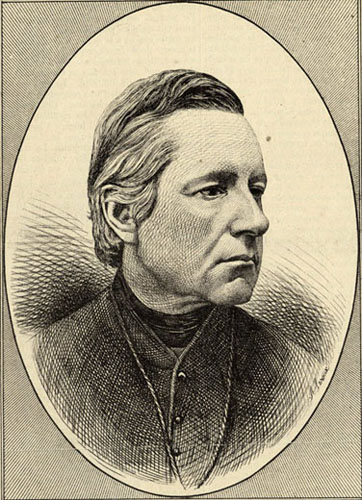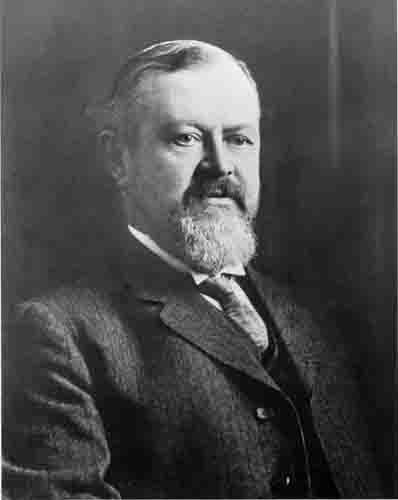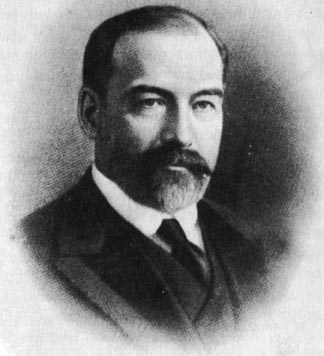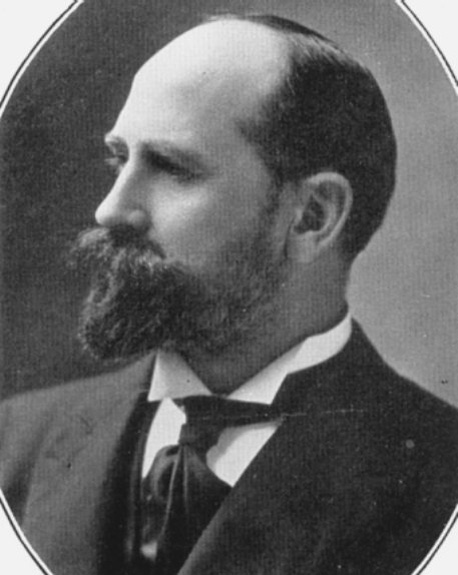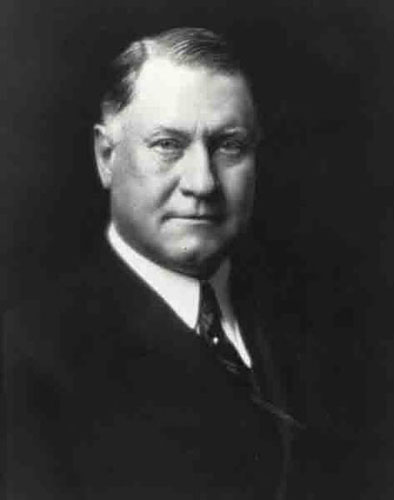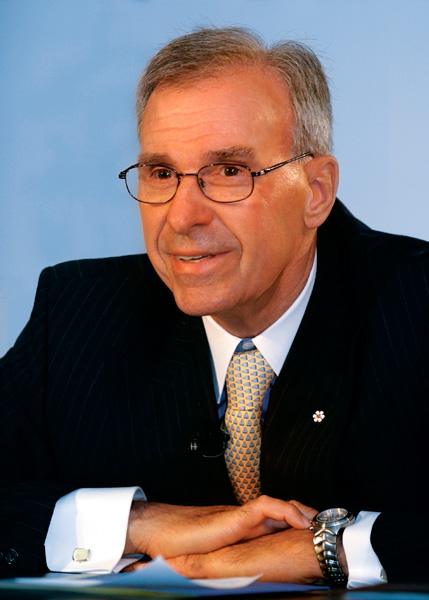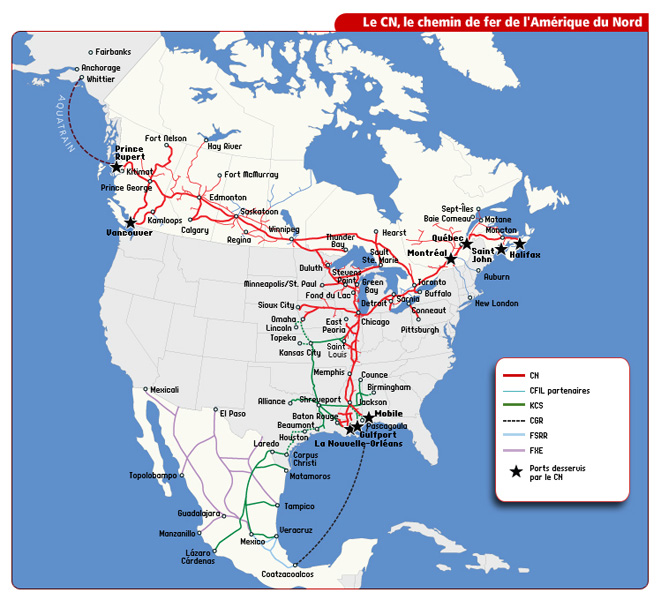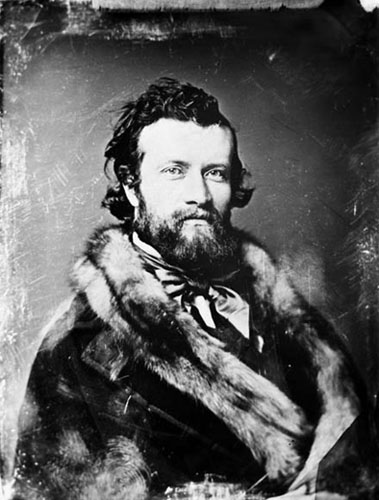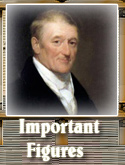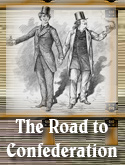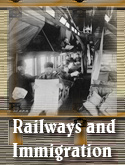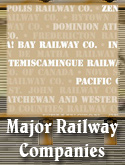Important Figures in Canadian Railway History
Canadian railways began their historic journey 175 years ago thanks to the vision and determination of businessmen, politicians, engineers and rail workers here and abroad. In 1836, the country’s first railway line was completed at a total length of not quite 24 kilometres. By the 1980s, more than 95,000 kilometres of track crossed Canada from ocean to ocean. Here are the stories of some of the main figures who contributed to the development of railways in Canada.
Visionary Prime Ministers
Sir John Alexander Macdonald
Born 1815 in Glasgow, Scotland; died 1891 in Ottawa, Ontario. Sir John A. Macdonald is especially remembered for being Canada’s first Prime Minister and a Father of Confederation in 1867. He served as Prime Minister from 1867 to 1873 and again from 1878 to 1891.
Macdonald saw railways as the perfect means to connect the country and stimulate economic prosperity. During his first term in office from 1867 to 1873, he initiated construction of the Intercolonial Railway connecting Québec City with Halifax. In 1879, after returning to power, he introduced his National Policy, which protected the manufacturing sector by imposing high tariffs on imported goods. This strategy specifically targeted the United States. Macdonald also did everything in his power to promote the construction of Canada’s first transcontinental railway by Canadian Pacific. The promise of railways was the most powerful argument used to encourage the territories to join the Canadian Confederation. The maps below outline the major changes to Canada’s political landscape between 1823 and 1905.
See the maps from the Canadian Atlas and the 1823 Map of Canada showing territorial division.

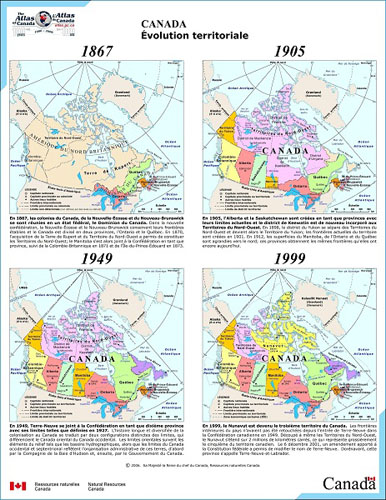
- John A. Macdonald was a Father of Confederation.
- He initiated construction of the Intercolonial Railway.
- He mandated Canadian Pacific to build Canada’s first transcontinental railway.
Sir Wilfrid Laurier
Born 1841 in Saint-Lin, Québec; died 1919 in Ottawa, Ontario. Sir Wilfrid Laurier was Prime Minister of Canada from 1896 to 1911.
In the early 1900s, Laurier’s government financed a second transcontinental railway, whose construction was entrusted to Grand Trunk Pacific. Laurier would later finance a third transcontinental line built by Canadian Northern Railway, in direct competition with Grand Trunk Pacific. He is remembered as a proponent of compromise.
Achievements
- Wilfrid Laurier authorized construction of Canada’s second and third transcontinental railways by Grand Trunk Pacific and Canadian Northern Railway, respectively.
A Mediator
Father Albert Lacombe
Born 1827 in Saint-Sulpice, Québec; died 1916 in Calgary, Alberta.
Three years after becoming an oblate priest in 1849, Albert Lacombe left for Alberta to live among the Cree and Métis. He learned to speak Cree and even wrote a dictionary and translated the New Testament into Cree. In 1883, aboriginals of the Blackfoot nation threatened to block construction of the Canadian Pacific Railway line through their reserve. Father Lacombe negotiated with them on behalf of Canadian Pacific and the Blackfoot finally agreed to allow the work to proceed. As an expression of his appreciation, the then President of Canadian Pacific gave Father Lacombe a lifetime pass to travel on the railway and symbolically named him company president for a period of one hour.
Achievements- Albert Lacombe encouraged French Canadians and Franco-Americans to settle in the West.
- He successfully negotiated to prevent a conflict between aboriginals of the Blackfoot nation and the Canadian Pacific Railway.
Entrepreneurs and Builders
John Molson
Born 1763 in Spalding, England; died 1836 in Île Sainte-Marguerite, Québec.
Orphaned before the age of ten, John Molson emigrated to Canada when he was eighteen with visions of becoming a businessman. He became involved in the beer industry and by 1786 owned his own brewery. He was able to convince local farmers to grow barley, an essential ingredient in beer making. In 1832, he was involved in launching Canada’s first railway company: the Champlain and St. Lawrence Rail Road running on wooden tracks. Operating between the cities of La Prairie and what is now Saint-Jean-sur-Richelieu, Québec, the railway was inaugurated on July 21, 1836. The new route provided a more direct overland link to the Richelieu River, and thereby access to Lake Champlain and trade with the United States.
Achievements
- John Molson built the colony’s first distillery.
- He financed Canada’s first railway, the Champlain and St. Lawrence Rail Road, which ran on wooden tracks.
Sir William Cornelius Van Horne
Born 1843 in Chelsea, Illinois (U.S.A.); died 1915 in Montréal, Québec.
William Cornelius Van Horne worked for railway companies his entire life. At the age of fourteen, he was a telegraph operator for the Illinois Central Railroad. He held a variety of positions of increasing responsibility with railway companies in the United States. After Canadian Pacific hired him as general manager, the company’s Prairie route between Winnipeg and Calgary was quickly completed. He also supervised construction of the last and most challenging section of railway in British Columbia leading to Port Moody. Canadian Pacific had expected construction of the transcontinental railway to take ten years, but with Van Horne at the helm, the project was completed in just half that time.
Achievements- William Cornelius Van Horne oversaw construction of Canada’s first transcontinental railway by Canadian Pacific.
- He made tourism a motor of economic prosperity for Canadian Pacific and was involved in the construction of the Banff Springs and Château Frontenac hotels.
Sir Charles Melville Hays
Born 1856 in Rock Island, Illinois (U.S.A.); died 1912 in the sinking of the Titanic.
Charles Melville Hays’s railway career began in the United States and continued in Canada. He entered the world of railways at the age of seventeen working for the Atlantic and Pacific Railway in St. Louis, Missouri, in the United States. He later served as the managing director of the Wabash, St. Louis and Pacific Railroad. In 1896, he was recruited to be the general manager of the Grand Trunk Railway and in 1909 was appointed company President. He founded Grand Trunk Pacific to realize the company’s aspirations of establishing routes in Western Canada. Hays was mandated by the government of Prime Minister Wilfrid Laurier to construct a second transcontinental railway, which was not completed until 1914, two years after his death. Despite this major achievement, Hays’s time as President of Grand Trunk was marred by troubled labour relations and serious financial problems.
Achievements
- Charles Melville Hays was President of the Grand Trunk Railway.
- He was head of the Grand Trunk Pacific Railway during construction of Canada’s second transcontinental railway.
- He built the Château Laurier Hotel in Ottawa.
Born 1853 in Acton, Ontario; died 1934 in Toronto, Ontario.
After first trying his hand at farming, Donald Mann worked for the Canadian Pacific Railway in Manitoba as well as in British Columbia’s Rocky Mountains. There he met William Mackenzie, with whom he would purchase the Lake Manitoba Railway & Canal Company. Subsequent expansion of the company’s routes led to the creation of the Canadian Northern Railway. Donald Mann was master planner for the company that built Canada’s third transcontinental railway. After Canadian Northern was absorbed in the merger that resulted in the creation of Canadian National Railways, Mann turned his attention to the mining sector.
Achievements
- Donald Mann and partner William Mackenzie oversaw construction of Canada’s third transcontinental railway.
- He was a managing director of the Canadian Northern Railway during excavation of the world’s first railway tunnel wired with electricity: the Mount Royal Tunnel in Montréal, Québec.
Sir William Mackenzie
Born 1849 in Kirkfield, Ontario; died 1923 in Toronto, Ontario.
William Mackenzie was a railway entrepreneur best known for his partnership with Donald Mann in the purchase of the Lake Manitoba Railway & Canal Company, later to become the Canadian Northern Railway. His role in the business was to secure financing. In 1915, their railway became the third to complete a route across Canada from east to west. The Canadian Northern Railway was one of several companies that were merged to form Canadian National Railways, now known as CN.
Achievements- William Mackenzie and partner Donald Mann oversaw construction of Canada’s third transcontinental railway.
- He was a managing director of the Canadian Northern Railway during excavation of the world’s first railway tunnel wired with electricity: the Mount Royal Tunnel in Montréal, Québec.
Sir Henry Worth Thornton
Born 1871 in Logansport, Indiana (U.S.A.); died 1933 in New York City (U.S.A.).
Henry Thornton began his railway career with the Pennsylvania Railway, where his responsibilities included the engineering of railway tracks. He then worked for the Long Island Railroad before leaving for England to take over the Great Western Railway. Towards the end of 1922, he became the first president of the newly formed Canadian National Railways, operating today as CN. Under his leadership, the company developed luxury services for travellers, including first-class hotels, and introduced radio broadcasts in its passenger trains. These rail broadcasts would give rise to what is now the Canadian Broadcasting Corporation. Henry Thornton was popular with his employees.
Achievements
- Henry Thornton developed rail services and infrastructures for small towns, including school cars and Red Cross cars to serve children in remote communities.
- He introduced radio broadcasts to train travel. Passengers were even able to listen to the first live broadcast of a hockey game on November 6, 1937, during a program that later became Hockey Night in Canada! The railway was thereby instrumental in the creation of the Canadian Broadcasting Corporation.
Born 1939 in Joliette, Québec.
Paul Tellier began his career as a senior civil servant with the federal government. His talent was quickly recognized by the business community and he went on to hold executive positions with several companies, including Grand Trunk Corporation, a subsidiary of CN. He was President and CEO of CN from 1992 to 2003, a period marked by privatization of the company and expansion into the United States. CN is now considered one of the most extensive railways in North America.
Achievements
- Paul Tellier oversaw the privatization of CN and the acquisition of an American railway as part of the company’s expansion strategy.
A Remarkable Engineer
Sandford Fleming
Born 1827 in Kirkcaldy, Scotland; died 1916 in Halifax, Nova Scotia.
Sandford Fleming is one of the most remarkable figures in Canadian history. After studying science and engineering in Scotland, he emigrated to Canada in 1845, where he established a reputation for his work as lead surveyor on the Intercolonial Railway route connecting Québec City with Halifax. When planning for the trans-Canada railway got underway following Confederation, Fleming was appointed Chief Engineer in 1871. He was responsible for identifying the best route for the new railway, although none of his many suggestions were adopted in the end. Nonetheless, one of his routes was later chosen by the Canadian Northern Railway for its own transcontinental line and is still used by CN today. Sandford Fleming is also recognized for having developed the system of standard time that is the basis for today’s Universal Time and international time zones.
Achievements
- Sandford Fleming is famous for building the Intercolonial Railway connecting the Maritime provinces with Québec.
- He insisted that all Intercolonial railway bridges be built of iron a progressive stance for the time.
- He designed the first postage stamp issued in Canada in 1851.








